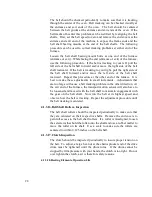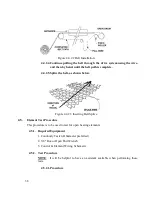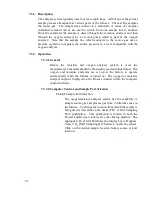
TABLE of CONTENTS
ii
Section 5
THERMAL PROCESS
5.
THEORY OF OPERATION - PROCESSING
5.1.
Energy Source
The radiation source in the Radiant Technology near-infrared furnaces is a filament of
tungsten or nickel chromium alloy, electrically heated to a temperature substantially above
chamber or product temperature. These filaments, sheathed in quartz, are arrayed above and
below the process area, supplying energy to the part by radiation. This energy transfer is
dependent upon the difference between the fourth powers of the absolute temperatures of the
source and the product. This may be expressed, in simplified form, by the equation
Q = K (T
4
source - T
4
product).
5.2.
Characteristics of Infrared Radiation
The characteristic of thermal radiation of particular interest is that peak emitted wavelength
decreases as the absolute temperature of the source increases. As a result of this decrease in
wavelength, photon momentum is increased. If all other properties (absorptivity, index of
refraction, etc.) remain constant over this wavelength/momentum change, the depth of useful
energy absorption is increased.
Just as the "penetrating power" of x-rays is greater than that of visible light, so also is the
"penetrating power" of near infrared greater (to a smaller degree) than that of far infrared.
It is precisely because of these characteristics, i.e., the greater temperature difference
existing between the radiant heat source and the part, and the increase in "penetrating power"
(photon momentum), that the near infrared furnaces are so remarkably effective in
processing thick film structures, structures requiring solder reflow, solar cell diffusion, and a
multitude of other micro-electronic applications.
5.3.
Atmosphere Purity and Control
Control of atmosphere to less than 10 ppm of undesired impurity and the ability to
intentionally mix gases (optional in some models) has opened an entirely new spectrum of
product processes, limited only by the imagination of the user.
5.4.
Thick Film Processing
As a result of the high equilibrium heat transfer, dwell time in a near infrared furnace is quite
short compared to a conventional furnace. The physical structure of thick film materials is
developed very quickly, and the overall thermal budget is relatively small.
Because of the very rapid internal build up of temperature during the volatile burnout stage,
Summary of Contents for 2115150301
Page 23: ...22 Figure 3 8 1 1 Event Logging ...
Page 44: ...43 Section 6 PRODUCT SPECIFICATION 6 PRODUCT SPECIFICATION ...
Page 62: ...61 View Product Tracking ...
Page 83: ...82 ...






























